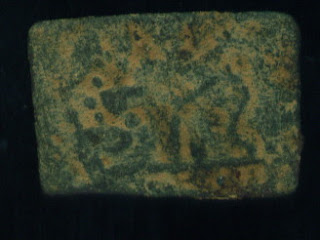
The term "Byzantine" itself comes from "Byzantium", the name that the city of Constantinople had before it became the capital of Constantine. This older name of the city would rarely be used from this point onward except in historical or poetic contexts.
The designation of the Empire as "Byzantine" began in Western Europe in 1557, when German historian Hieronymus Wolf published his work Corpus Historiæ Byzantinæ, a collection of Byzantine sources. The publication in 1648 of the Byzantine du Louvre (Corpus Scriptorum Historiæ Byzantinæ), and in 1680 of Du Cange's Historia Byzantina further popularized the use of Byzantine among French authors, such as Montesquieu.It was not until the 19th century, however, with the birth of modern Greece, that the term "Byzantine" came into general use in the Western world.
Before this, the Empire was described by Western Europeans as Imperium Graecorum (Empire of the Greeks)—Byzantine claims to Roman inheritance had been actively contested from at least the time of the coronation of Charlemagne as Imperator Augustus by Pope Leo III in 800. Whenever the Popes or the rulers of the West wanted to make use of the name Roman to refer to the Byzantine emperors, they preferred the term Imperator Romaniæ instead of Imperator Romanorum, a title that Westerners maintained applied only to Charlemagne and his successors
Constantine moved the seat of the Empire, and introduced important changes into its civil and religious constitution.In 330, he founded Constantinople as a second Rome on the site of Byzantium, which was well-positioned astride the trade routes between East and West; it was a superb base from which to guard the Danube river, and was reasonably close to the Eastern frontiers. Constantine also began the building of the great fortified walls, which were expanded and rebuilt in subsequent ages. J. B. Bury asserts that "the foundation of Constantinople [...] inaugurated a permanent division between the Eastern and Western, the Greek and the Latin, halves of the Empire—a division to which events had already pointed—and affected decisively the whole subsequent history of Europe."
Constantine built upon the administrative reforms introduced by Diocletian.He stabilized the coinage (the gold solidus that he introduced became a highly prized and stable currency], and made changes to the structure of the army. To divide administrative responsibilities, Constantine replaced the single praetorian prefect, who had traditionally exercised both military and civil functions, with regional prefects enjoying civil authority alone. In the course of the 4th century, four great sections emerged from these Constantinian beginnings, and the practice of separating civil from military authority persisted until the 7th century.
Under Constantine, Christianity did not become the exclusive religion of the state, but enjoyed imperial preference, since the Emperor supported it with generous privileges: clerics were exempted from personal services and taxation, Christians were preferred for administrative posts, and bishops were entrusted with judicial responsibilities.Constantine established the principle that emperors should not settle questions of doctrine, but should summon general ecclesiastical councils for that purpose. The Synod of Arles was convened by Constantine, and the First Council of Nicaea showcased his claim to be head of the Church.
The state of the Empire in 395 may be described in terms of the outcome of Constantine's work. The dynastic principle was established so firmly that the emperor who died in that year, Theodosius I, could bequeath the imperial office jointly to his sons: Arcadius in the East and Honorius in the West. Theodosius was the last emperor to rule over the full extent of the empire in both its halves.













